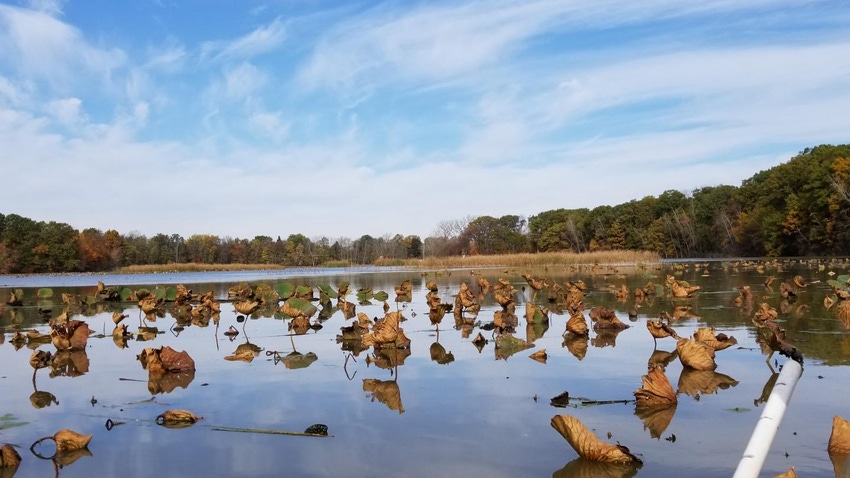Focus on how to reduce nitrogen and phosphorus runoff in Lake Erie differs for voluntary or regulatory approach.

Lake Erie continues to have a bull’s-eye on it regarding the interaction of runoff sources into the basin. The latest hit comes from the Environmental Working Group (EWG) and the Environmental Law & Policy Center, which blamed animal farms’ manure flow into the region.
However, Ohio livestock groups voiced their commitment to water quality and questioned the credible science behind the latest report.
By analyzing aerial photos, satellite imagery and state permit data, the environmental groups identified 775 hog, cattle, dairy and poultry operations in the Maumee River watershed in Ohio, Indiana and Michigan in 2018 – a 40% increase since 2005. “The investigation found that more than a fourth of factory farms in the watershed had expanded since they were built, and at least half the manure generated along the Ohio portion of the river comes from operations that lack state permits.”
A statement from the Ohio Livestock Coalition, which represents Ohio farmers in the livestock and poultry community, noted, “Preserving Ohio’s waterways is a daily job for farmers; it’s our responsibility and our obligation. While we take very seriously credible scientific studies of nutrient runoff, the report from EWG fails to meet that test. Understanding nutrient management and water quality requires credible, on-the-ground, actionable research – not a collection of aerial photos.”
EWG noted that the Ohio Environmental Protection Agency reported that the amount of phosphorus in Lake Erie has remained fairly steady over the past few years, even though the state has been working with soy and corn farmers to implement voluntary best practices for handling agricultural runoff. EWG claims that although farmers have made strides in reducing the amount of commercial fertilizer running into Lake Erie, animal farms and the manure they generate have been “flying under the radar.”
The Ohio Livestock Coalition countered that there is no single contributor to elevated phosphorus levels. “There is no rational reason to single out livestock farmers, and there will be no singular answer to address Ohio’s water quality challenges. That is why Ohio’s farmers have invested millions in voluntary efforts to reduce nutrient runoff, have supported comprehensive regulatory reforms and have contributed thousands of hours toward identifying workable solutions to protect Ohio’s lakes, rivers and streams,” the coalition noted in its statement.
Residents of Toledo, Ohio, recently approved a ballot measure granting the water body the same rights as people, which will allow citizens to sue on its behalf. The Ohio Farm Bureau is challenging the results as unconstitutional.
The Ohio Attorney General recently filed a motion in the Drewes Farm Partnership vs. City of Toledo case seeking to intervene as a plaintiff alongside the Drewes Farm Partnership. The motion argues that the state of Ohio has a significant interest in the protection of Lake Erie, along with a significant interest in supporting Ohio’s agricultural, environmental and natural resource laws.
The motion further argues that Toledo’s Lake Erie Bill of Rights (LEBOR) charter amendment contradicts Ohio’s “multifaceted statutory, regulatory and civil and criminal enforcement programs that control water pollution,” along with the Ohio Constitution’s limitations on municipal authority. “Prior to this motion to intervene, we had not seen an official statement or action by the state of Ohio regarding LEBOR, and this motion demonstrates that the state believes that LEBOR infringes on its rights,” according to Evin Bachelor, law fellow at Ohio State University Extension agricultural and resource law program.
The EWG report was released the same time the Ohio governor has called for additional attention to addressing water quality. The Maumee River drains about 6,500 square miles in the three states, but three-fourths of the watershed is in Ohio. The state doesn’t require permits for small- and medium-size animal farms, the environmental groups said. EWG has called for Ohio to require permits for all commercial animal operations, regardless of size, to allow state regulators to track how many facilities exist, how many animals they house and how much manure they produce.
“Ohio must finally set a legal limit for the amount of phosphorus industrial farms can release into waterways and create a concrete plan to achieve the needed reductions,” said Madeline Fleisher, senior attorney in Ohio for the Environmental Law & Policy Center. “Millions of people in the Great Lakes region are tired of watching regulators and lawmakers continue to spend money just to kick the can down the road.”
The Ohio Corn & Wheat Growers Assn. (OCWGA) and the Ohio Soybean Assn. (OSA) expressed support for Ohio Gov. Mike DeWine’s approach to improve water quality and protect the long-term sustainability of family farms in Ohio. The administration’s proposed H2Ohio initiative includes significant resources for the implementation of best management practices, such as cover crops, buffer strips, equipment and precision technology that will help farmers keep nutrients in the soil where they belong.
“Farmers want to be part of the solution and are already taking action to curb runoff and protect the health of our waterways,” OSA president and grain farmer Scott Metzger said. “This funding will help us accelerate the adoption of best management practices.”
The group said the move also demonstrates DeWine’s commitment to bringing all stakeholders to the table and finding long-term, science-based solutions.
“We don’t have to choose between the health of Lake Erie and the viability of Ohio farms; we will achieve both if we work together,” said OCWGA president Jon Miller, a Fairfield County, Ohio, grain farmer. “I look forward to further work with the administration and learning more about the details of this plan as it moves through the legislative process.”
About the Author(s)
You May Also Like



.png?width=300&auto=webp&quality=80&disable=upscale)

